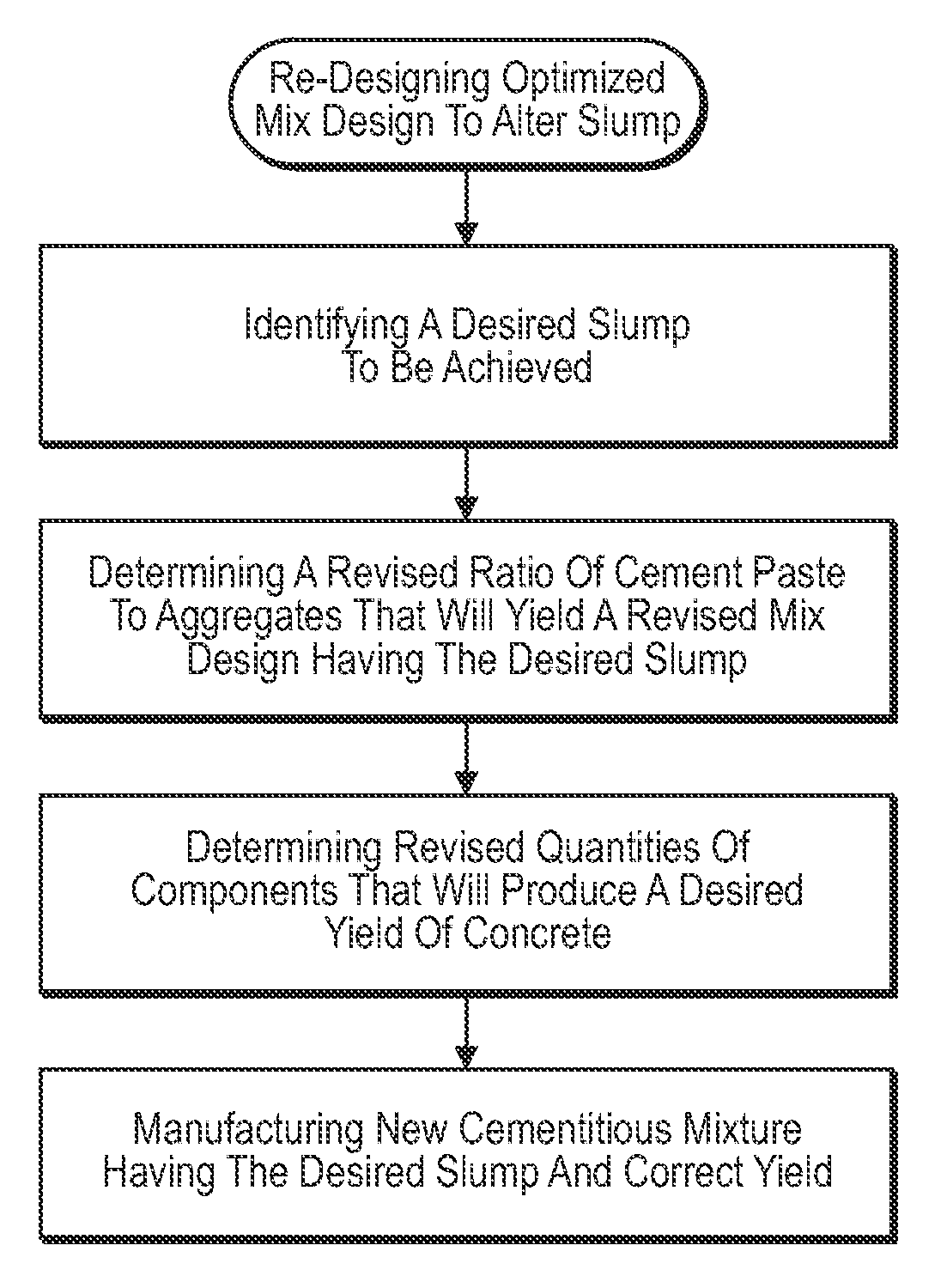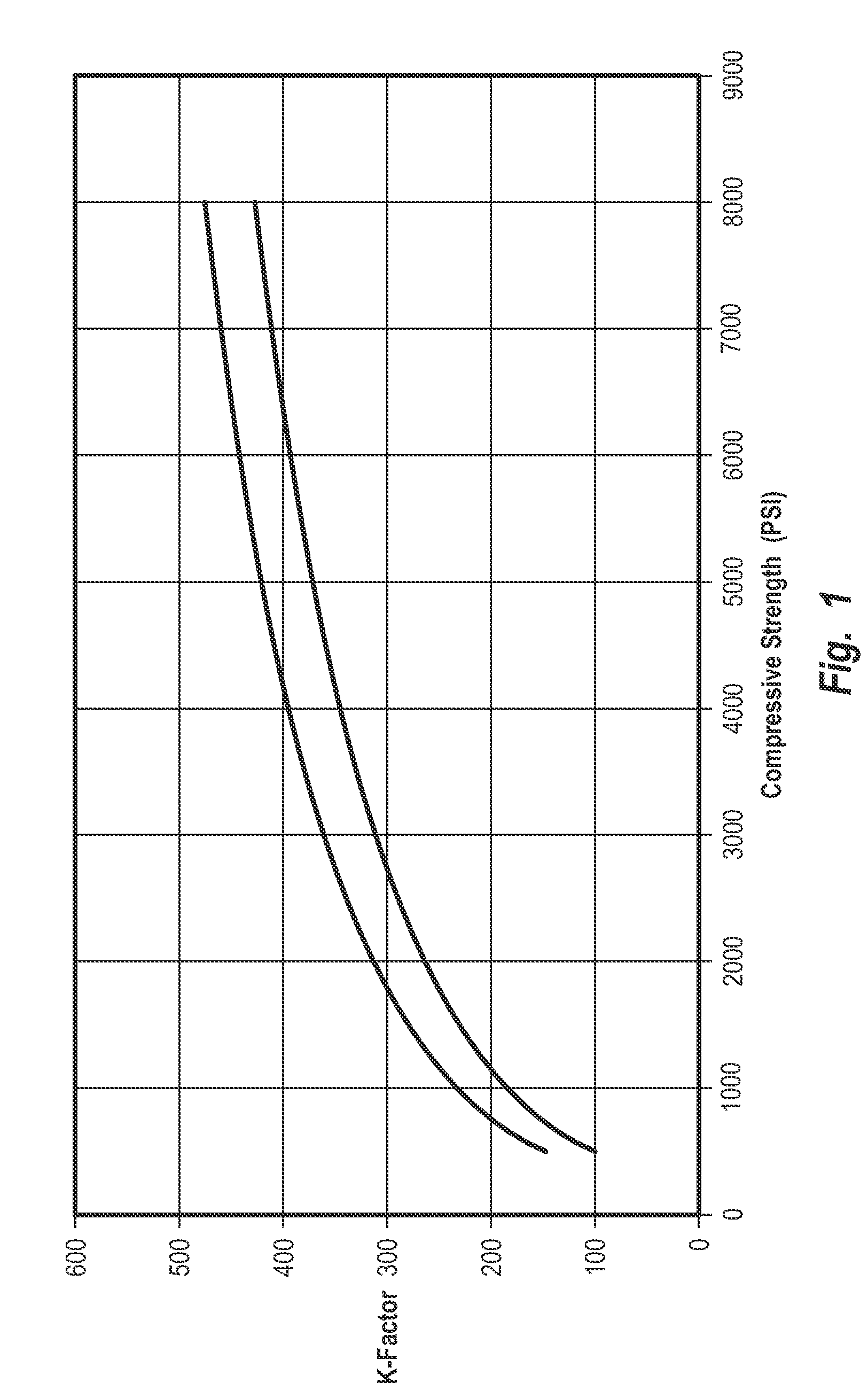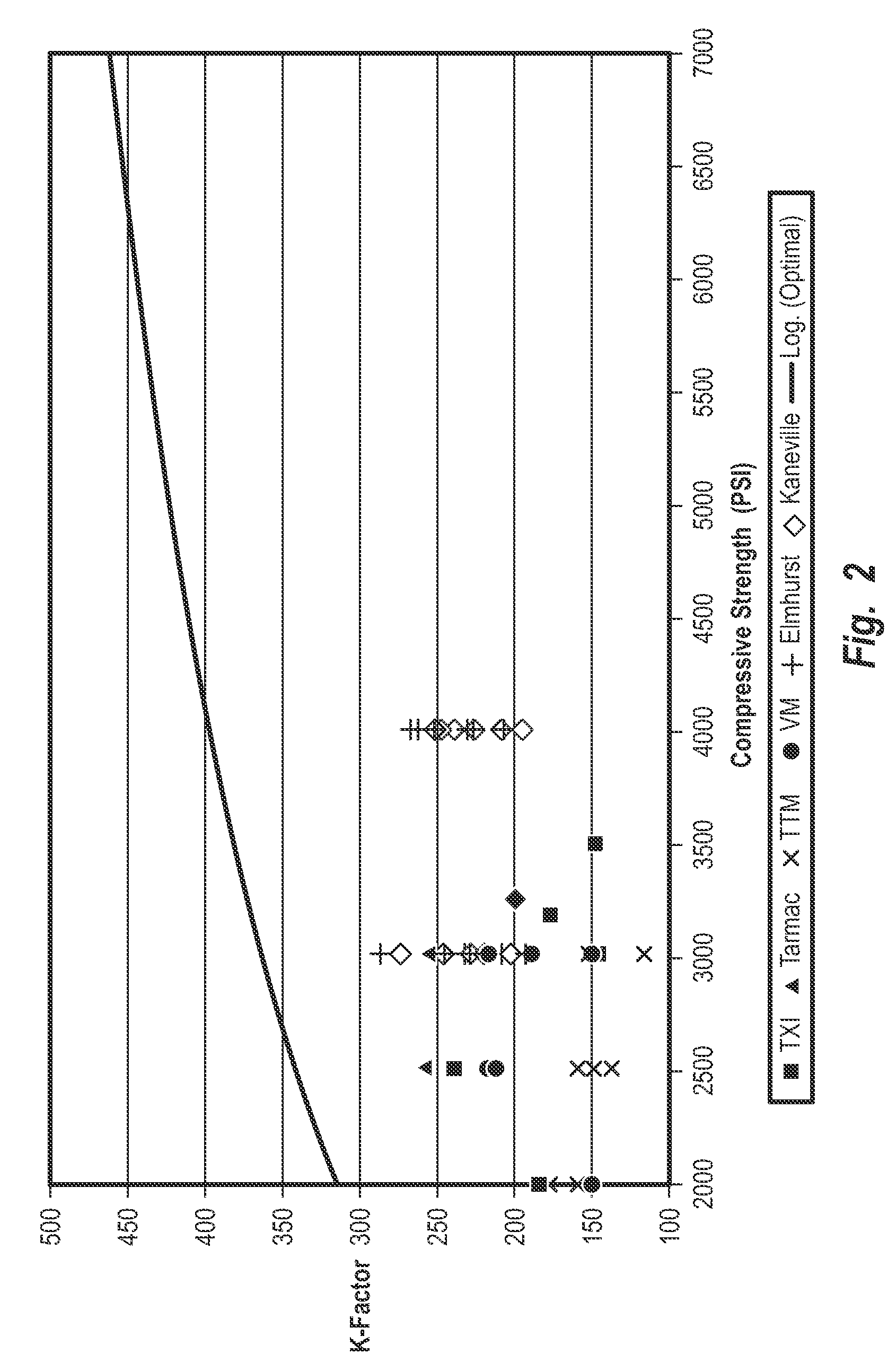Computer-implemented methods for re-designing a concrete composition to have adjusted slump
a technology of composition and slump, applied in the field of concrete composition design optimization, can solve the problem that hydraulic cement cannot achieve the highest theoretical binding efficiency at lower strengths, and achieve the effect of less trial and error testing, more accurate predictions of concrete strength, and efficient identification
- Summary
- Abstract
- Description
- Claims
- Application Information
AI Technical Summary
Benefits of technology
Problems solved by technology
Method used
Image
Examples
examples 1-4
[0326] Examples 1-4 illustrate four optimized concrete mix designs that were prepared using the improved DOC process described herein. The four mix designs of Examples 1-4 can replace twelve pre-existing standard concrete mix designs utilized by an existing concrete manufacturing plant. Each mix design of Examples 1-4 corresponds to a group of three pre-existing mix designs of similar type that guarantee a minimum compressive strength, at a specified slump, and percentage of entrained air when delivered to the customer. The pre-existing mix designs of the concrete manufacturing plant, their components, cost (revised Apr. 7, 2006), and apparent design K factors, will be presented in four groups of three concrete mix designs, each group having similar properties or characteristics.
examples 5-8
[0335] Examples 5-8 illustrate four optimized concrete mix designs that were prepared using the improved DOC process described herein. The four mix designs of Examples 5-8 can replace twelve pre-existing standard concrete mix designs of an existing concrete manufacturing plant, which used the same 12 mix designs as in Comparative Examples 1a-4c but manufactured concrete using a different set of raw materials. Each mix design of Examples 5-8 corresponds to a group of three pre-existing mix designs of similar type that guarantee a minimum compressive strength, at a specified slump, and percentage of entrained air when delivered to the customer. The pre-existing mix designs of the concrete manufacturing plant, their components, cost (revised Oct. 27, 2005), and apparent design K factors, will be presented in four groups of three concrete mix designs, each group having similar properties or characteristics.
examples 9-12
[0343] Examples 9-12 illustrate four optimized concrete mix designs that were prepared using the improved DOC process described herein. The four mix designs of Examples 9-12 can replace twelve pre-existing standard concrete mix designs of an existing concrete manufacturing plant, which used the same 12 mix designs as in Comparative Example 1a-4c but manufactured concrete using a different set of raw materials. Each mix design of Examples 9-12 corresponds to a group of three pre-existing mix designs of similar type that guarantee a minimum compressive strength, at a specified slump, and percentage of entrained air when delivered to the customer. The pre-existing mix designs of the concrete manufacturing plant, their components, cost (revised Oct. 27, 2005), and apparent design K factors, will be presented in four groups of three concrete mix designs, each group having similar properties or characteristics.
PUM
| Property | Measurement | Unit |
|---|---|---|
| strength | aaaaa | aaaaa |
| strength | aaaaa | aaaaa |
| field strength | aaaaa | aaaaa |
Abstract
Description
Claims
Application Information
 Login to View More
Login to View More - R&D
- Intellectual Property
- Life Sciences
- Materials
- Tech Scout
- Unparalleled Data Quality
- Higher Quality Content
- 60% Fewer Hallucinations
Browse by: Latest US Patents, China's latest patents, Technical Efficacy Thesaurus, Application Domain, Technology Topic, Popular Technical Reports.
© 2025 PatSnap. All rights reserved.Legal|Privacy policy|Modern Slavery Act Transparency Statement|Sitemap|About US| Contact US: help@patsnap.com



